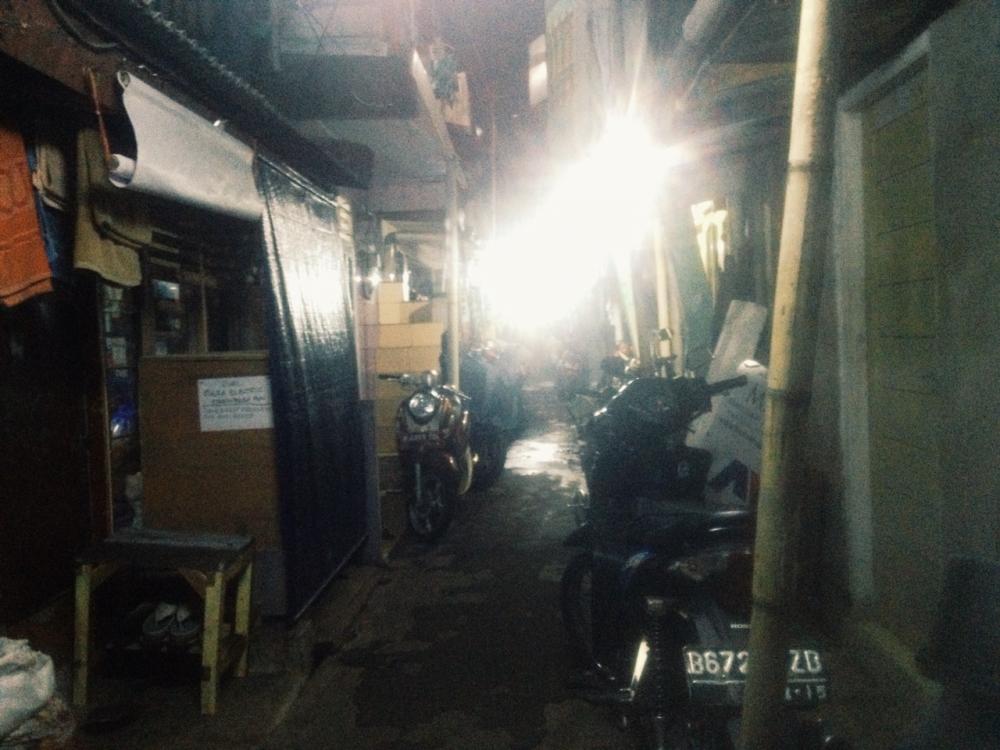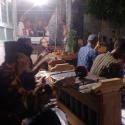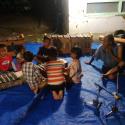It has now been 48 weeks since the time my friend, Penyok, said to me:
‘Le, ayo kerumah gue! Iseng aja lah sekali-sekali lo main ke Asrama, kagak pernah ada bule kesono.’ (Le, come to my house! Just for the fun of it, come over to Asrama at least once, no bule/white person has been there).
Almost a year ago now, I found myself tucked in the little shantytown of Asrama. An area where the streets barely fit one motorcycle at a time and your neighbor’s house is literally, two steps from your door. I came there on the back of a Honda and on the beckoning of a friend, naïve and unaware of what I would see. Having lived there since 2008, arriving from Jogjakarta as a young teenager and living together with his brother in one of the many boarding houses in the area, Penyok has every road of Asrama 1 to Asrama 6 memorized all in his head. However, to a stranger and any newcomer with the bad luck of getting lost in there, Asrama resembles a never-ending maze of three-story shacks on rickety wooden stilts, balancing above a trash-filled river.
We zoom in and out of alleyways, make left turns at small roads and make right turns at even smaller roads; Penyok’s hand does not leave the brake handle, just in case a quick tug on the brakes is required at the sight of any motorcycle lamp reflecting off the walls, hoping to avoid collisions.
We go past bamboo bridges above an offset of the Manggarai Dam, filled with the waste of a rapidly growing capital city.
We go past a crazy person walking the streets at midnight, dressed in rags and constantly licking his palms.
We go past a group of youngsters huddled together, drinking ‘bootleg’ liquor, and singing songs well into the night.
And then we get there. I get up and lift my leg and without noticing, my foot clumsily hits the neighbor’s door with a big thump. I hurry into Penyok’s home before the neighbors wake up.
His ‘home’.
He lives in a room that is about the size of your average wealthy Jakartan bathroom, living there with his brother and his two friends, Bulet and Eko. They offer me tea and some cigarettes and start apologizing because ‘rumah gue segini doang nih le, nggak seru’ (my house is very basic, it isn’t exciting). I try to take in as much of the environment as I can and create a mental picture to remember. I feel like I have a story to tell.
I ask the gang about how they came to live in Asrama and the history of the area. It turns out that Asrama or ‘Hostel/Boarding House’ used to be a housing area set up by the Dutch government for the Indonesian workers who were employed at the train station and worked the railway lines of Stasiun Manggarai. It wasn’t until the mass transmigration of settlers from around the country under Soeharto’s regime that those who were not affiliated with the train station began to take up residence in Asrama and surrounding areas. Now, a majority of those living in Asrama are either Sundanese or Javanese in ethnicity but heavily influenced by the Betawi culture; adopting the accent, words, and (most noticeably) switching their “a’s” to “e’s”. Aside from their real names, very little of their ethnic background remains in Penyok + the Gang and a lot of Jakarta’s youth. At the most, you’ll see homage to their heritage in the tattoos on their bodies.
Jakarta faces a crisis of youths who have lost touch with their roots, either clinging on to a foreign culture and adopting a foreign style or clinging on to the metro-culture of the Big Durian.
On my way back home to my house, which is only 200 meters from Asrama, I pass the same group of youngsters who were hanging out previously. They were drinking Western style drinks, singing songs by Western bands, and wearing Western apparel, influenced by Western style. The notion pops into my head that maybe, just maybe, this city is growing way too rapidly for its own good.
The divide between economic classes is apparent and wide, where a difference of 200 meters can mean an air conditioner, a television set and a showerhead.
Where the difference of 200 meters dictates whether your house is above bamboo platforms or concrete roads.
Where the difference of 200 meters shows up in the way you say your “a’s” and “e’s”.
Those 200 meters are the perfect epitomization of Jakarta; where houses are built above riverbanks and rickety wooden shacks that house a certain family of five to a space of your family’s kitchen are referred to as ‘home’.
At the end of the day, which side of that 200 meters that you are born into makes all the difference.
Call it fate… or as we say, ‘nasib’









